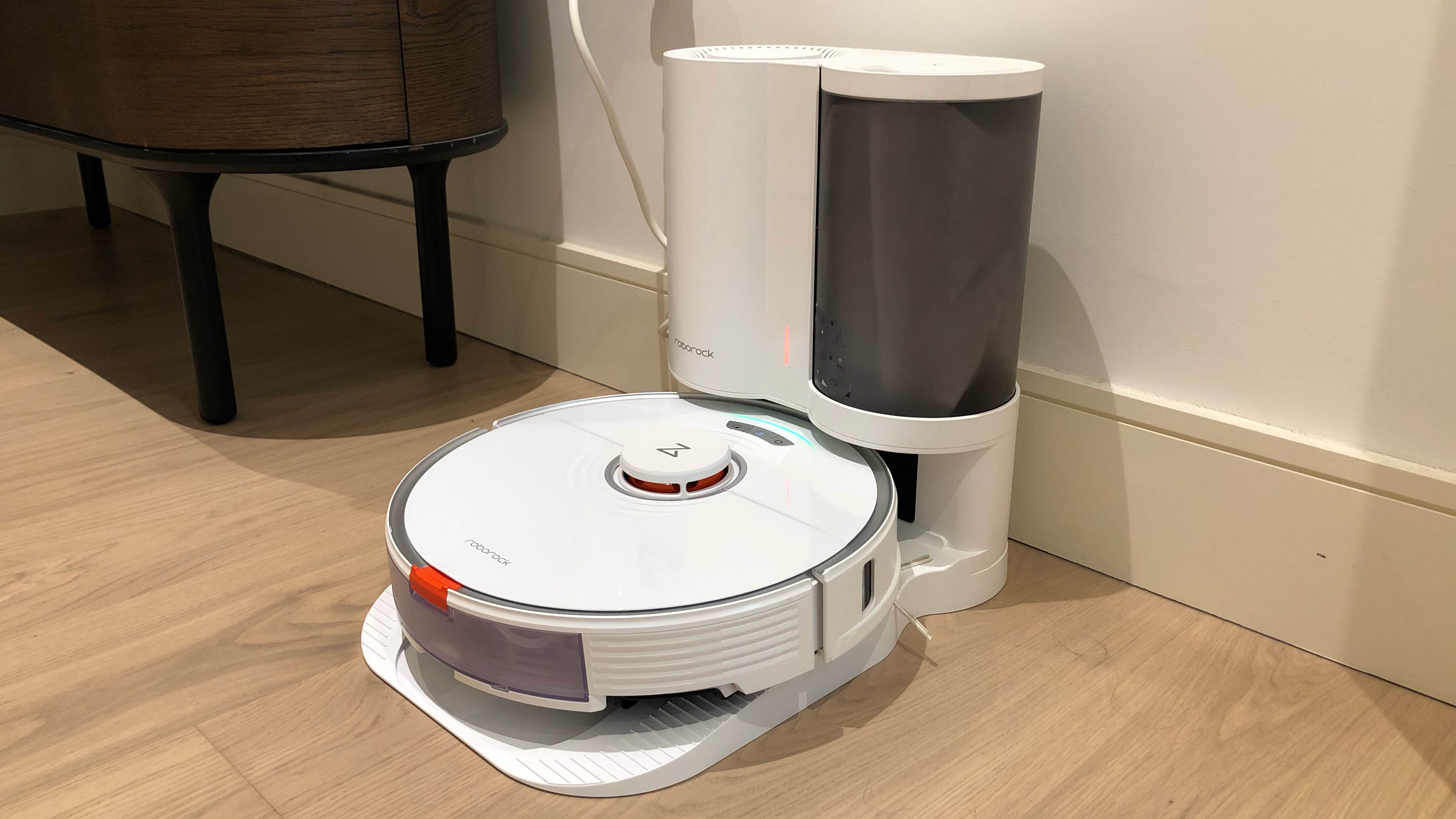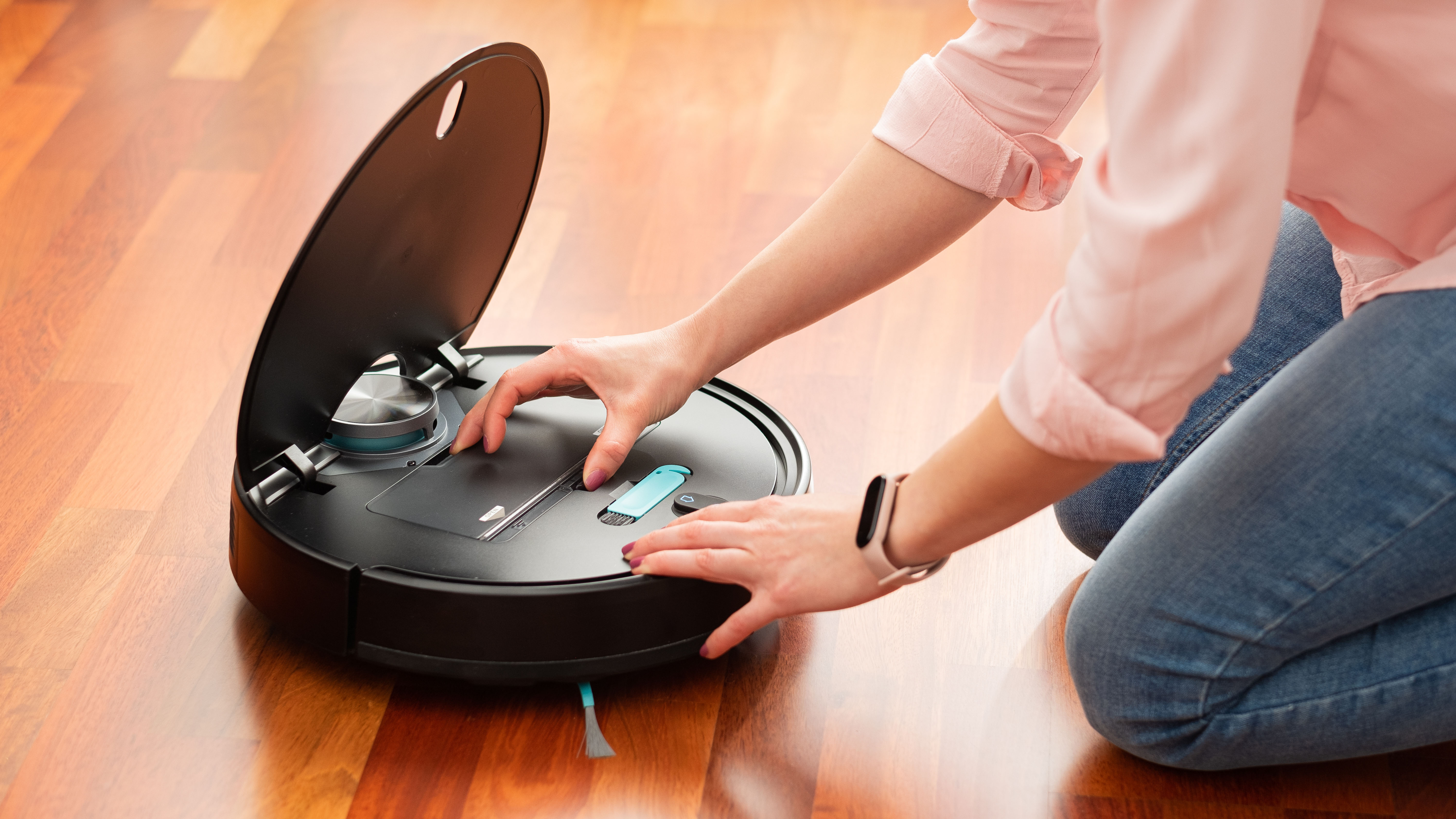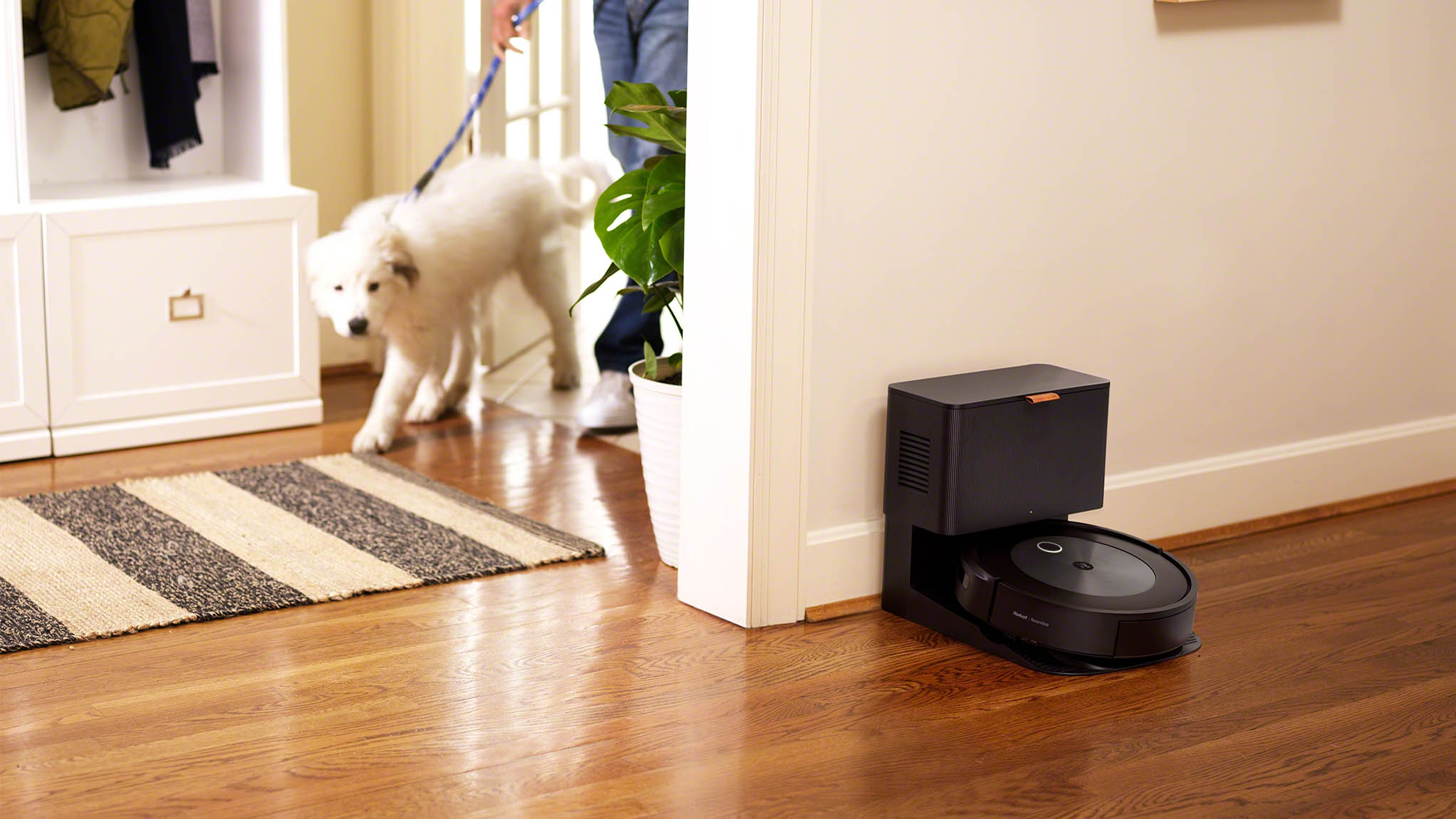Are robot vacuums with self-emptying bases worth it?
Here are the pros and cons of robot vacuums with self-emptying bases

The best robot vacuums come in all shapes and sizes. Some can function as mops while others are capable of object recognition so you never need worry about rogue wires again. But one recent development that's growing in popularity to become almost expected from the latest robot vacuum offerings is a robot vacuum with a self-emptying base.
Self-emptying bases on robot vacuums are considered a premium feature. These provide added convenience and give your robot vacuum a newfound level of independence. But are self-emptying bases as good as they sound, and are they worth the hefty expense?
Let's look at the pros and cons of self-emptying bases and consider their ultimate value.
What are self-emptying bases?
If you’ve recently looked up robot vacuum cleaners, you will no doubt have noticed that some come with much larger and bulkier L-shaped docks — these are self-emptying bases.
As the name suggests, self-emptying bases are designed so that the robot vacuum can empty its own dustbin — no supervision required. Essentially, once the robot docks, the base creates a vacuum to remove the dust and debris from the robot and transfers it to an internal bag or a removable canister. With this technology, the robot vacuum can return to base whenever it’s at full capacity, and continue its work immediately once it has self-emptied.

In terms of maintenance, this means that rather than emptying the dustbin onboard the robot vacuum with each use, the base needs emptying instead once it reaches full capacity, which can take 45 to 60 days depending on the model. A self-emptying base will also charge the robot vacuum at the same time, meaning it completely replaces the regular dock.
Some bases have been developed to further improve the performance of the best robot mops as well. For instance, the Roborock S7 MaxV Ultra’s base contains two water tanks as well as a dustbin. The tanks each hold clean and dirty water — the former refills the onboard tank, while the latter is extracted from the cloth once the work is finished. Some of these robot mop bases can even scrub the microfiber cloth as part of the cleaning process.
What are the pros of self-emptying bases?
1. Don’t touch the dirt — If you’ve got a bagged model, you don’t have to worry about picking dust clumps out of the dustbin or releasing the debris into the atmosphere when you empty your robot vacuum. This is very handy if you suffer from allergies.
Even if you have a bagless model, self-emptying bases can hold anywhere from 45 to 60 days worth of dust, so they need emptying far less often versus the robot vacuum itself. In other words, you would be subjecting yourself to the dust less regularly.

2. Less effort on your front — With a self-emptying base, your robot vacuum can take care of itself when it reaches full capacity. It can act independently, so you don’t even need to be at home to supervise its progress. This technology also means that the robot vacuum can cover a much larger space without fear of errors or pausing half-way through a cleaning cycle.
Ultimately, quite a hindering drawback of the typical robot vacuum’s design has been removed — the tiny dustbin. Gone are the days of bending down and emptying it after each cleaning session.
3. Dock is more likely to remain stable — After testing countless robot vacuums, one thing which really bugs us is the lack of stability when it comes to the charging dock. Basically, unless you secure the dock to the wall, some robots will nudge and shift it out of place with each run, resulting in confusion and errors.
However, if you opt for a model with a self-emptying base, this problem is much less likely. Due to the internal technology, self-emptying bases are naturally more heavy and stable, even when a robot vacuum is climbing aboard.

4. Looks impressive — It may seem like a petty point, but it’s still worth mentioning. Self-emptying bases look cool, so much so that guests will stop and admire it. (This has happened to me on more than one occasion.) The advanced technology on this piece of kit will add a modern touch to any home, and it even makes the robot vacuum itself look more impressive and capable.
Of course, the aesthetics may not be to everyone’s taste, or indeed even in keeping with the decor in some homes. However, its impact and presence will certainly not go unnoticed.
What are the cons of self-emptying bases?
1. Expensive — There’s no denying it, self-emptying bases will cost you a pretty penny. And while price ranges have certainly expanded and become more accommodating as more models offer this technology, self-emptying bases still add a hefty sum to the overall price tag.
Prices start from around $400, but can go as high as $1,400 with the latest technology. So, even if you decide to invest in a robot vacuum with a self-emptying base, you may still need to keep a budget in mind. Bear in mind that if you opt for a bagged design, you will need to pay for replacement bags over time as well.
2. Takes up space — While self-emptying bases certainly look impressive, they’re by no means compact. The designs are generally quite bulky and heavy and can take up a lot of space. For instance, the base of the aforementioned Roborock S7 MaxV Ultra has a staggering footprint of 19.4 inches by 16.5 inches. Self-emptying bases are generally quite tall and can make the robot vacuum protrude further into the room than you expect when docked.

And while the standard charging dock will require the same surrounding parameters to function, the size of a self-emptying base itself will add to the space required and ultimately take up more room versus without. Make sure you check the dimensions before you buy so you know what you’re getting into.
3. Noisy — You assume all robot vacuums will be noisy to an extent; after all, they’re vacuuming. But, the noise produced by a self-emptying base will likely take you by surprise, even when you’re used to it. The sound produced by the vacuum as it empties the dustbin is generally louder than any noise made from the robot vacuum itself. And because it can happen randomly during a cleaning cycle, it can easily make you jump when you’re at home.
The emptying cycle can last up to a minute, and it can sound louder than an upright vacuum cleaner. There are sometimes different settings, so you can adjust the power of the vacuum, and consequently the noise, plus DND modes are often available if you don’t want the robot to surprise you. However, whenever the robot vacuum empties itself, be prepared for a noisy process.
Are self-emptying bases worth it?
Ultimately, the suitability of a self-emptying base comes down to your needs and preferences. If you suffer from allergies, or lack the time to keep on top of your robot vacuum’s dustbin, a self-emptying base can be a great investment. The convenience and independence it gives to a robot vacuum is indeed a bonus as well.
However, if you’re shopping on a budget or lack space in your home, you should ask yourself if a self-emptying robot vacuum is really necessary? Emptying the dustbin aside, the self-emptying base will not improve the actual performance of a robot vacuum, so you’re paying for this addition more as a luxury than anything. I can’t deny it looks great, and it makes the robot vacuum more dependable, but is it worth the expense? That’s up to you.
Sign up to get the BEST of Tom's Guide direct to your inbox.
Get instant access to breaking news, the hottest reviews, great deals and helpful tips.

Katie Mortram used to be a Homes Editor for Tom's Guide, where she oversaw everything from kitchen appliances to gardening tools, as well as smart home tech. Specializing in providing expert advice for cleaning and home manintenance, she now works as Household Advice Editor for Good Housekeeping.
